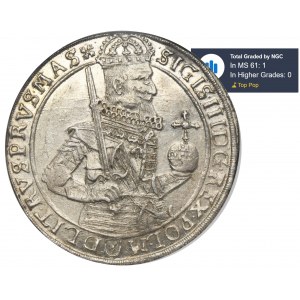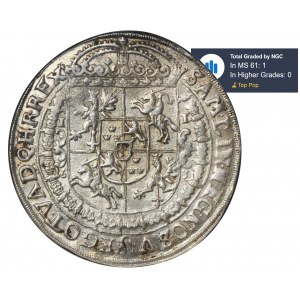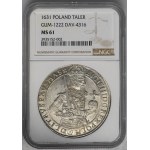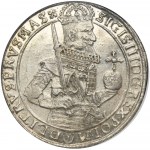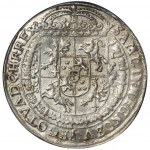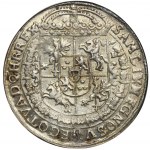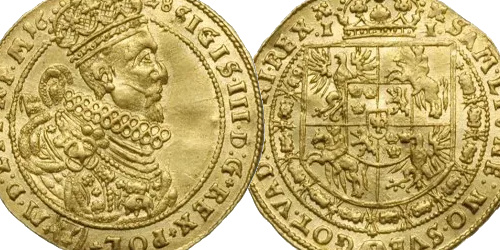Very rare inscription variety SIGIS.III.D.G.REX.POL.M&D.LIT.RVS.PRVS.MAS - / ✠- on the obverse and SAM.LIV.NEG.NO.SV⊛E.GOT.VAD.Q.HR.REX / - on the reverse, with a sword touching the orifice. On the obverse, a narrow half-figure of the king to the right, wearing a crown and armor, with a sword and a royal apple in his hands; at the bottom, the coat of arms of Hermolaus Ligęza's Half-Kosice in a small shield. On the reverse, a multi-poly coat-of-arms shield, on the sides I-I, initials of the mintmaster Jacob Jacobson and the date 16-31, at the bottom the Order of the Golden Fleece, separating the obverse inscriptions.
Variety in the "Catalogue of Sigismund III Vasa thalers from 1627-1632 from the Bygos mint" by Jan Dostych, marked with a rarity grade of R7, meaning 4-6 pieces known to the author.
A rarer, late vintage Sigismund III thalers.
Excellent, unprecedented state of preservation. Piece with exquisitely preserved detail which perfectly shows the reproduction of the royal figure's details. A delightful, strong mirror, the coin untouched by circulation.
An absolute mint thaler of Sigismund III Vasa. Extremely rare in this state of preservation. Rating from NGC extremely severe.
The only piece with the highest grade in the NGC registry.
A specimen piece, definitely for the best thaler collections of Old Poland.
The background of the monetary history of the Republic of Poland during the reign of Sigismund Vasa was the progressive monetary crisis caused by the situation in Germany and the influx of spodleniated German coinage into Poland. Initially, the mint rate was determined by Stefan Batory's ordinance of 1580. With the crisis deepening, in 1601 it was decided to raise the mint rate, i.e. devalue the denominations in circulation. The following years saw further legislation lowering the silver content of various denominations. Of these, the most important was the Ordinance of 1623. It introduced a stable monetary system, based on the monetary system of the Empire. During the reign of Sigismund III, new denominations appeared in the Polish-Lithuanian Commonwealth - three-cornered coins, halves and orts. In turn, in 1621, the highest denomination in the history of Polish money was minted at the Bydgoszcz mint - the hundred-drachma. This was the crowning achievement of the intensive issuance of gold coins during the reign of Sigismund III. Crown mints (Olkusz, Wschowa, Poznań, Malbork, Bydgoszcz, Lublin, Kraków, Warsaw), Lithuanian mints (Vilnius), municipal mints (Gdańsk, Elbląg, Toruń, Riga, Poznań, Wschowa) and a private mint in Łobżenica worked during this period. Sigismund Vasa's Swedish coins were issued by mints in Stockholm, Rewal and Malbork. In 1627, a decision was made to stop issuing small coinage. This decision remained in force until 1650.
